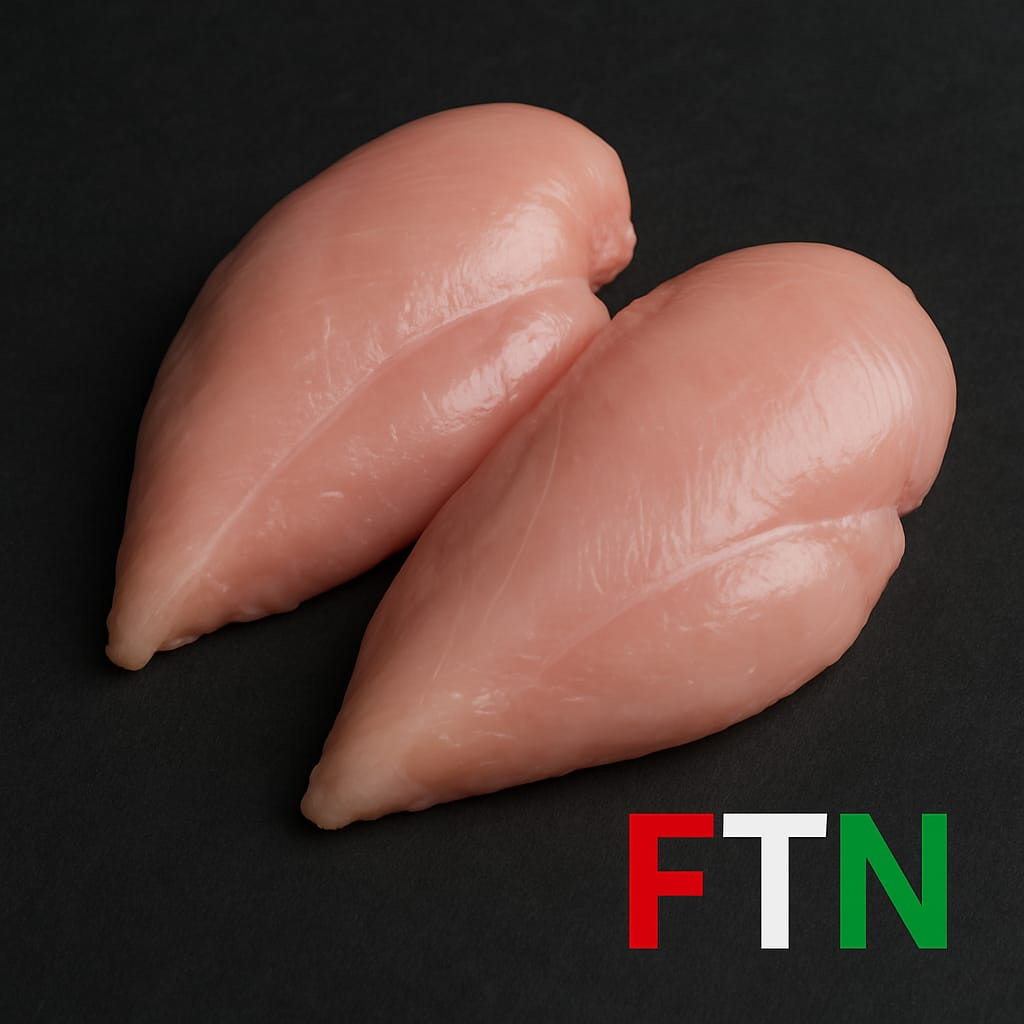Chicken: The King of Lean Protein in American Diets 🍗🇺🇸
Why Chicken Remains a Top Protein Choice
Chicken continues to be one of the most popular and dependable sources of protein in households across the United States. Its mild flavor, affordability, and impressive nutritional profile make it a go-to option for health-conscious individuals and busy families alike. Whether you’re grilling, roasting, baking, or stir-frying, chicken fits seamlessly into nearly any meal plan.
Packed with lean protein and low in fat, chicken provides essential amino acids that your body needs for muscle repair, immune function, and overall health. A single 3-ounce serving of chicken breast contains roughly 26 grams of high-quality protein—enough to support muscle growth and recovery after workouts. 💪🔥
But the benefits don’t stop at protein. Chicken is rich in vitamins like B6, B12, and niacin, all crucial for energy production and maintaining a healthy nervous system. It also delivers important minerals such as phosphorus, selenium, and zinc, supporting everything from bone strength to immune response.
Nutritional Benefits of Chicken: Fuel for a Strong Body 🥗
Here’s why chicken earns its place on your plate:
- High-Quality Protein: Helps maintain muscle mass and supports metabolic health.
- Low in Saturated Fat: Especially when skinless, chicken breast is heart-friendly.
- Vitamin B6 & B12: Supports brain health and helps in red blood cell formation.
- Phosphorus & Selenium: Essential for strong bones and powerful antioxidant defense.
- Zinc: Vital for immunity and cellular metabolism.
Whether you’re an athlete or just aiming for a balanced diet, chicken offers the nourishment your body needs to perform and recover. 🏃♂️🥇
Versatility in the Kitchen: Chicken for Every Taste 👩🍳🌍
One of chicken’s greatest strengths is its versatility. It adapts to nearly every cuisine on the planet:
- American BBQ: Grilled chicken thighs slathered in smoky sauce.
- Asian Stir-Fries: Bite-sized pieces cooked quickly with veggies and soy sauce.
- Latin American Dishes: Pollo asado, tacos, and hearty stews.
- Mediterranean Cuisine: Lemon-herb chicken grilled to perfection.
Its neutral flavor absorbs spices and marinades beautifully, encouraging endless culinary creativity. From weeknight dinners to festive family feasts, chicken always fits the bill. 🍽️🎉
Budget-Friendly and Widely Available 💵🛒
Chicken is not only nutritious, but it’s also one of the most budget-friendly protein sources available. Compared to beef, pork, or lamb, chicken is significantly more affordable, making it accessible to households of all income levels.
With options ranging from whole birds to skinless breasts, thighs, wings, and even ground chicken, it caters to diverse preferences and cooking styles. Its consistent availability in supermarkets and local markets across the U.S. adds to its appeal.
Lean Protein for a Healthier You 🧠❤️
For those focused on health, skinless chicken breast is an ideal choice. It’s low in calories and saturated fat while still offering a full range of essential nutrients. That makes it perfect for:
- Weight Management: Keeps you full longer with fewer calories.
- Heart Health: Supports lower cholesterol and blood pressure.
- Fitness Goals: Promotes muscle growth and recovery.
Just remember to avoid over-processed chicken products. Opt for fresh or minimally processed cuts to get the most out of your meals. ✅
Cultural and Traditional Significance 🍗🌎
Across the world, chicken plays a key role in traditional meals and cultural celebrations. In the U.S., fried chicken is a beloved comfort food often tied to Southern heritage. In Asia, dishes like chicken curry or chicken pho are deeply rooted in family traditions.
Chicken symbolizes prosperity, nourishment, and unity in many cultures. It’s more than just food—it’s part of shared stories and rituals passed down through generations. 🧡🍴
Modern Trends: Chicken in the Age of Meal Prep & Wellness 📦🥗
With today’s fast-paced lifestyle, meal prepping has surged in popularity. Chicken is perfect for preparing in bulk and using in:
- Rice bowls with veggies
- Wraps and salads
- Healthy pasta dishes
Its long shelf life (when cooked properly) and ability to take on different flavors make it ideal for weekly meal plans.
Even those following flexible plant-based diets (like flexitarians) often include chicken for its nutritional benefits. It’s the bridge between healthy eating and real-life practicality.
A Look at Sustainability 🌱🐔
As consumer awareness grows, sustainability in chicken farming is gaining attention. Many people are now seeking:
- Organic or free-range chicken
- Antibiotic-free options
- Brands that prioritize animal welfare and eco-friendly practices
New technologies and regenerative farming practices are also helping reduce the environmental footprint of poultry production.
Conclusion: Why Chicken Will Always Be a Winner 🏆
Whether you care about nutrition, taste, culture, or budget, chicken checks all the boxes. It’s lean, affordable, widely accessible, and endlessly adaptable in the kitchen. From powering your workouts to bringing comfort to your dinner table, chicken is here to stay.
As the demand for nutritious and sustainable food continues to rise, chicken’s legacy as the “king of protein” remains stronger than ever. 👑🍗
Personal Take:
I appreciate how visually appealing and straightforward the video is—it simplifies the compelling health story of chicken without overwhelming the viewer. It effectively communicates why chicken remains a dietary staple.
Suggestions for Improvement:
- Callout Graphics
Add on-screen pop-ups like:
“26g complete protein per 3-ounce serving”
“Packed with B6, B12, niacin, phosphorus, selenium”
- Show Meal Examples
Insert quick clips of healthy chicken dishes—like grilled breasts in salads or savory stir-fries—to inspire culinary ideas and show versatility. - Balance with Health Notes
Include a brief caution overlay such as “Opt for grilling or baking over frying for best health benefit” to encourage healthy preparation methods.

